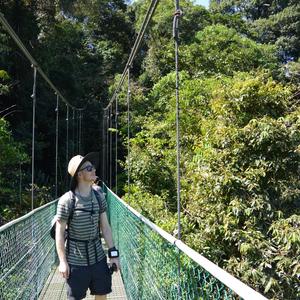With a third of all international tourists to India travelling to Rajasthan, visiting the Land of Kings can leave you with the rather deflating feeling of being little more than one of a crowd. At Wild Frontiers, we believe that it is important to see these iconic sights, but we also like to offer travellers a sense of the true India.
We have a long intertwined history with India, we have gone to all lengths possible to seek out the more secret places, off the beaten track, to show you an authentic Rajasthan; unspoilt rural villages, out of the way temples and lakes.
So with this in mind, we have pulled together what we think are the best places to visit in Rajasthan, from tourist destinations, to some of the best kept secrets. Without further Ado..
Agra
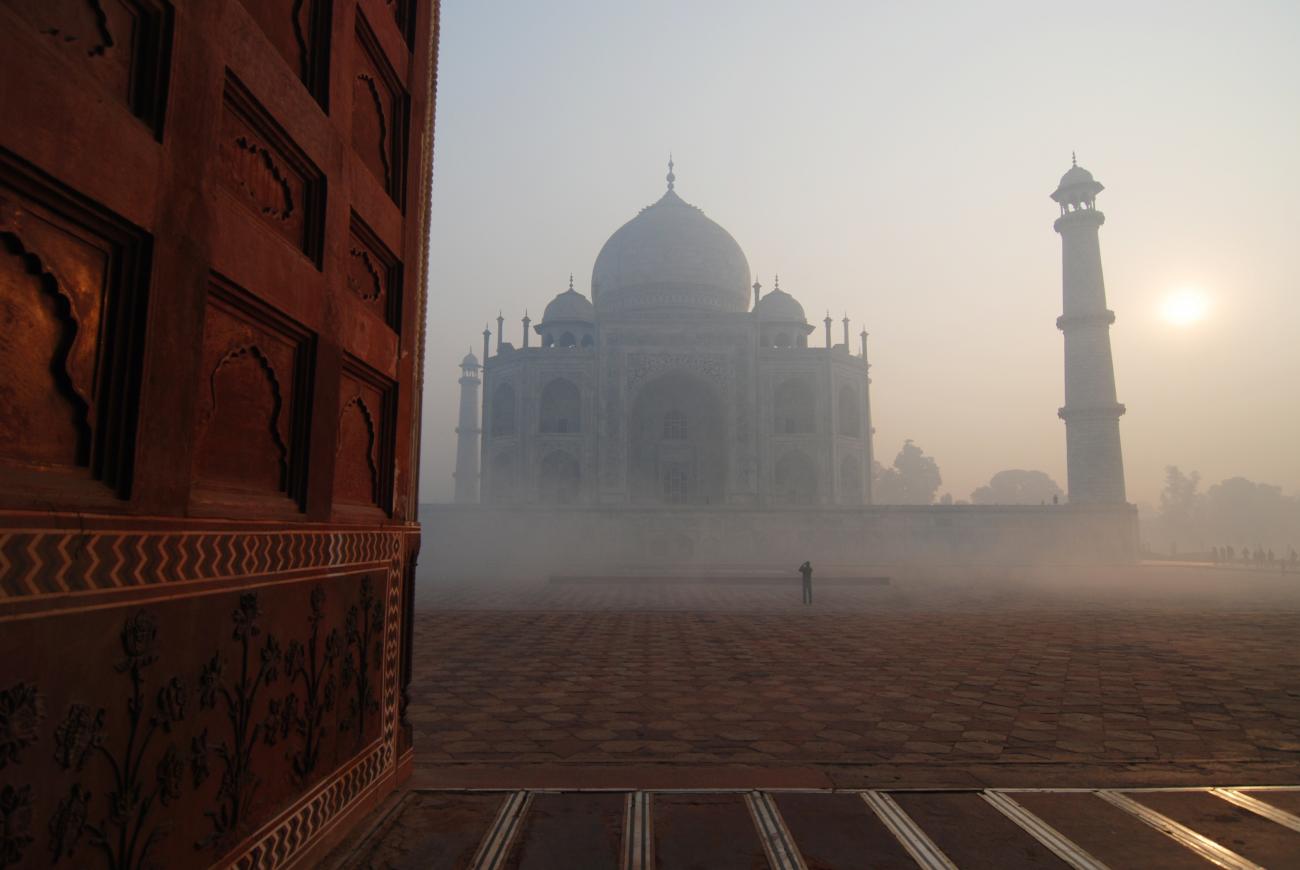
Agra is the city that possesses the most photographed building in Asia, the sublime Taj Mahal. This most famous Mughal monument was constructed by Emperor Shah Jahan in memory of his third wife, Mumtaz Mahal, who died in childbirth. For twenty two years 20,000 men laboured day and night to build this masterpiece, described as the most extravagant monument ever built for love.
The Taj Mahal is widely recognized as "the jewel of Muslim art in India and one of the universally admired masterpieces of the world's heritage". Also in Agra you'll find the Red Fort, the Tomb of Itimad ud Daulah, often called the 'Baby Taj' and the Moghul gardens of Ram Bagh.
Amritsar
.jpeg)
Amritsar derives its name from Amrit Sarovar, the holy tank that surrounds the fabulous Golden Temple. Located in the heart of the city, the temple complex is surrounded by a maze of narrow lanes, or katras, that house one of the busiest markets in India. But the Golden Temple is a serene presence, radiating a calm that makes people bow their heads in reverence.
The gurudwara, as Sikh temples are called, is the holiest of Sikh shrines. It is not just Sikhs who travel to the Golden Temple to pay homage; Hindus and people of other faiths make the pilgrimage to offer prayers at Harmandir Sahib. Another major attraction is the Indo-Pakistan border crossing at Wagah, just a short distance from Amritsar, with its elaborate change-of-guards ceremony.
Bhuj
Dating back to the early years of the 16th century, the old walled city of Bhuj is the most important town in Kutch. Famed for its handicrafts and embroidery, the city is home to a wonderful collection of brightly decorated Hindu temples and intricately carved wooden pavilions that hark back to a nostalgic India that predates the arrival of mass tourists. Riddled with a fascinating network of labyrinthine alleyways, it presents a wonderful place to simply wander and explore.
The town's renowned artisans produce some truly elegant work too, including beautiful batiks and intricate silk embroidery, much of it distinctly unique to the various communities that produce it. Home to the ornate splendour of the Aina Mahal Palace, the city also hosts the annual festival of Rann Utsav each February/March.
Bharatpur
Playing an important part in the history of Rajasthan, Bharatpur was founded in 1733 and was once an impregnable city. The city is best known for the Keoladeo Bird Sanctuary which can be found within its walls and hosts many endangered migratory birds including the rare Siberian Crane.
This world heritage site was previously a hunting ground for the maharajas of Bharatpur and was named after the ancient temple found at the centre of the park. Other sites to see include the palaces and forts in the city and surrounding countryside. The Lohagarh Fort, which was so strong that it took six weeks for the British to break through its defences, is one of the most interesting.
Bijaipur
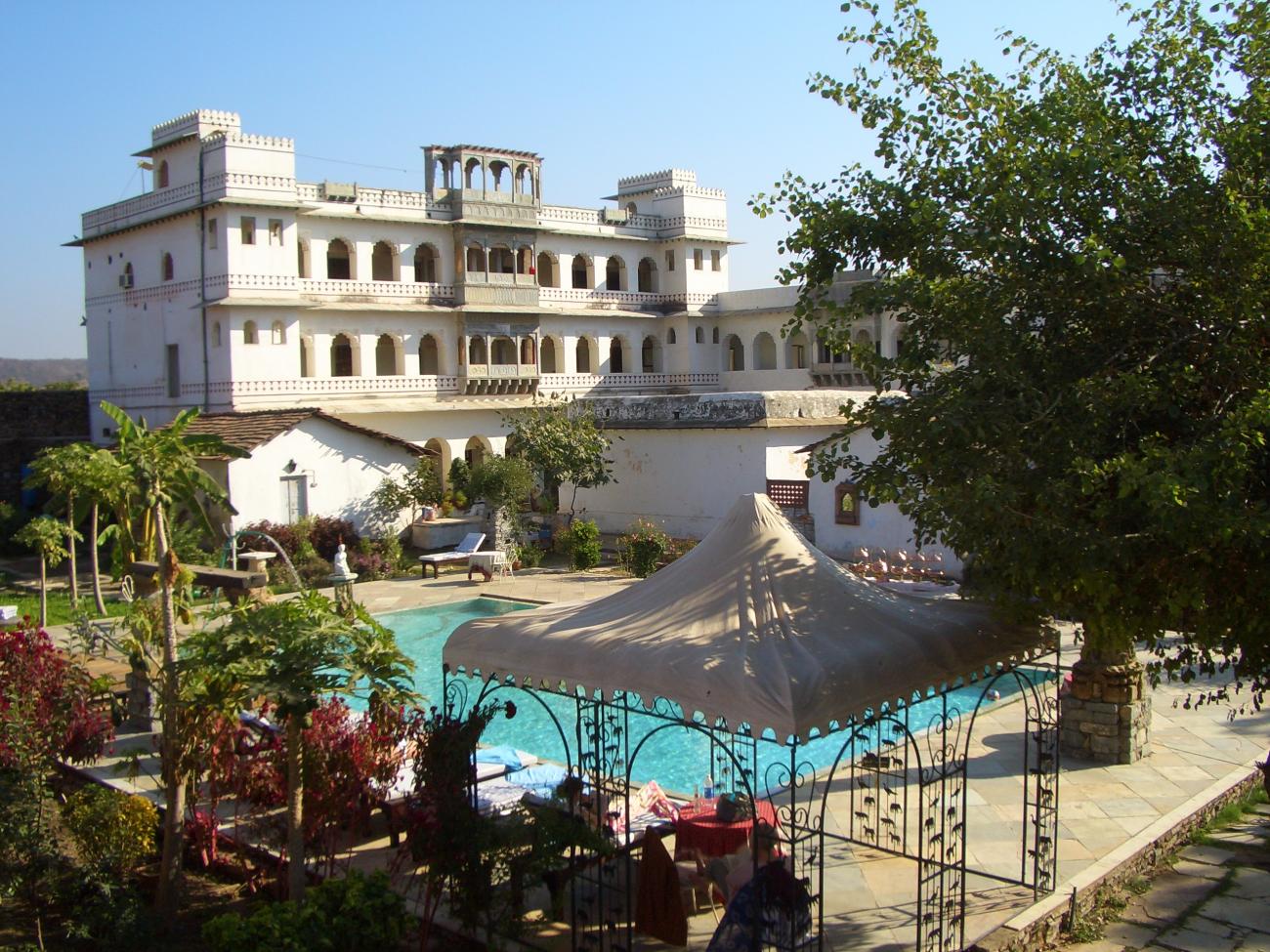
Situated at the foothills of Vindhyachal Hills is Bijaipur, a rural village filled with agricultural farm. Being ruled by several dynasties throughout the years, Bijaipur holds a significant history worth exploring. Located in the heart of the village is the 16th Century Castle which was turned into a heritage hotel in 1991. The Bijaipur Castle is a must on the places to visit in Rajasthan.
Find out more about the Bijaipur Castle here >
In Castle Bijaipur you can go horse riding to a 9th century sun worshipers temple, take a jeep safari in a vintage jeep, go for walks, taking cooking lessons, lounge by the pool or even practice yoga with the local Raja!
Bikaner
Bikaner is the state known for its sweets, its wool production and for having the largest camel farm in the country. The city of Bikaner started as a small town founded in 1486 and has become one of the largest cities in Rajasthan. With a collection of imposing and beautifully sculpted forts, palaces and temples the city has many interesting sights. With its buildings constructed from pleasing red and yellow sandstone you can see some of the finest creations of Rajput civilisation.
Bundi
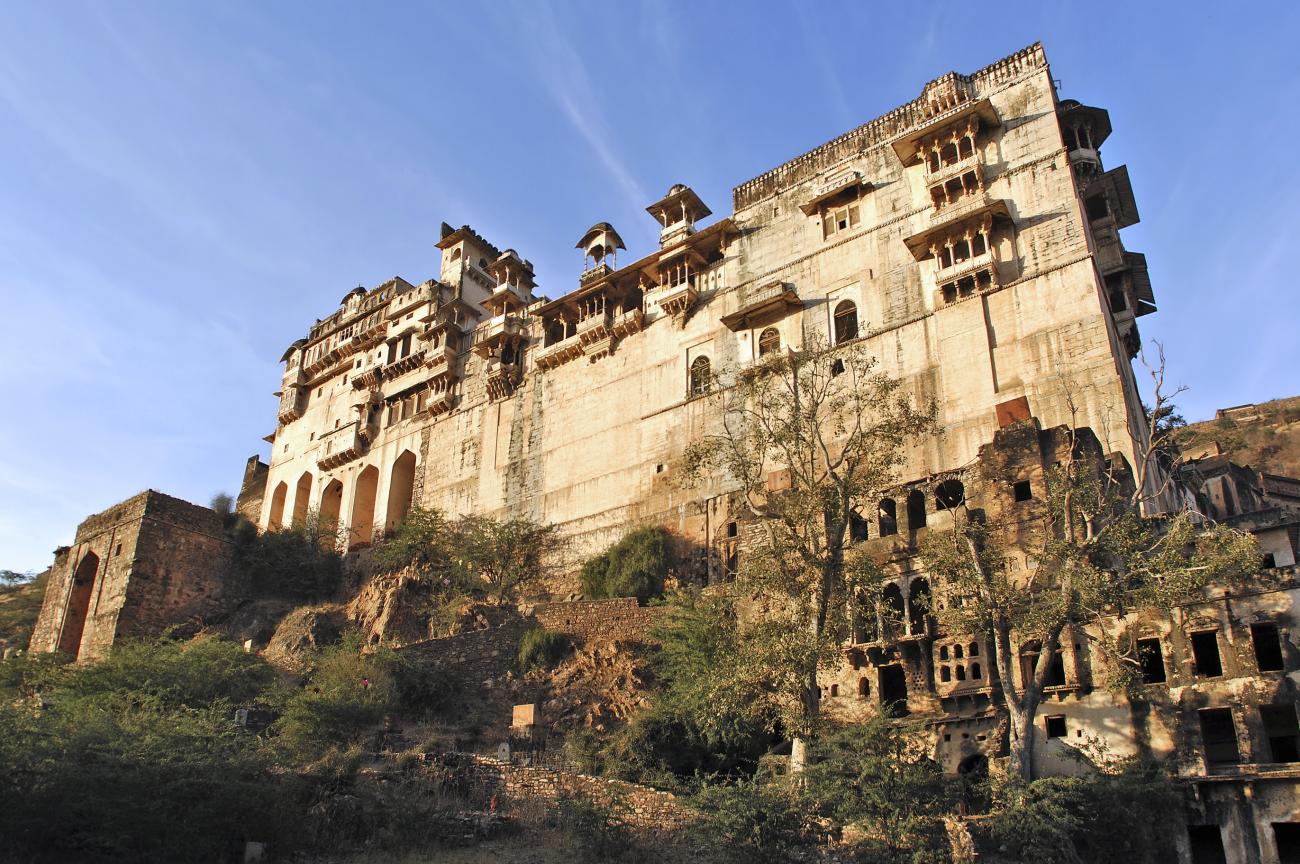
In 1193AD, when Prithviraj Chauhan was defeated by Sultan Mohammed Ghauri, some Chauhan nobles sought shelter in Mewar and became allies to the Rana while other young warriors moved towards the Chambal Valley and overpowered the Meena and Bhil tribals – thus establishing their own kingdom of Hadoti.
Later, two branches of Hadas formed two separate states of Kota and Bundi, on either side of the river Chambal. Bundi is surrounded by the Aravalli hills on three sides and is circumscribed by a massive wall with four gateways. It is a truly medieval city in great condition benefiting from being off the main tourist routes.
Chittorgarh
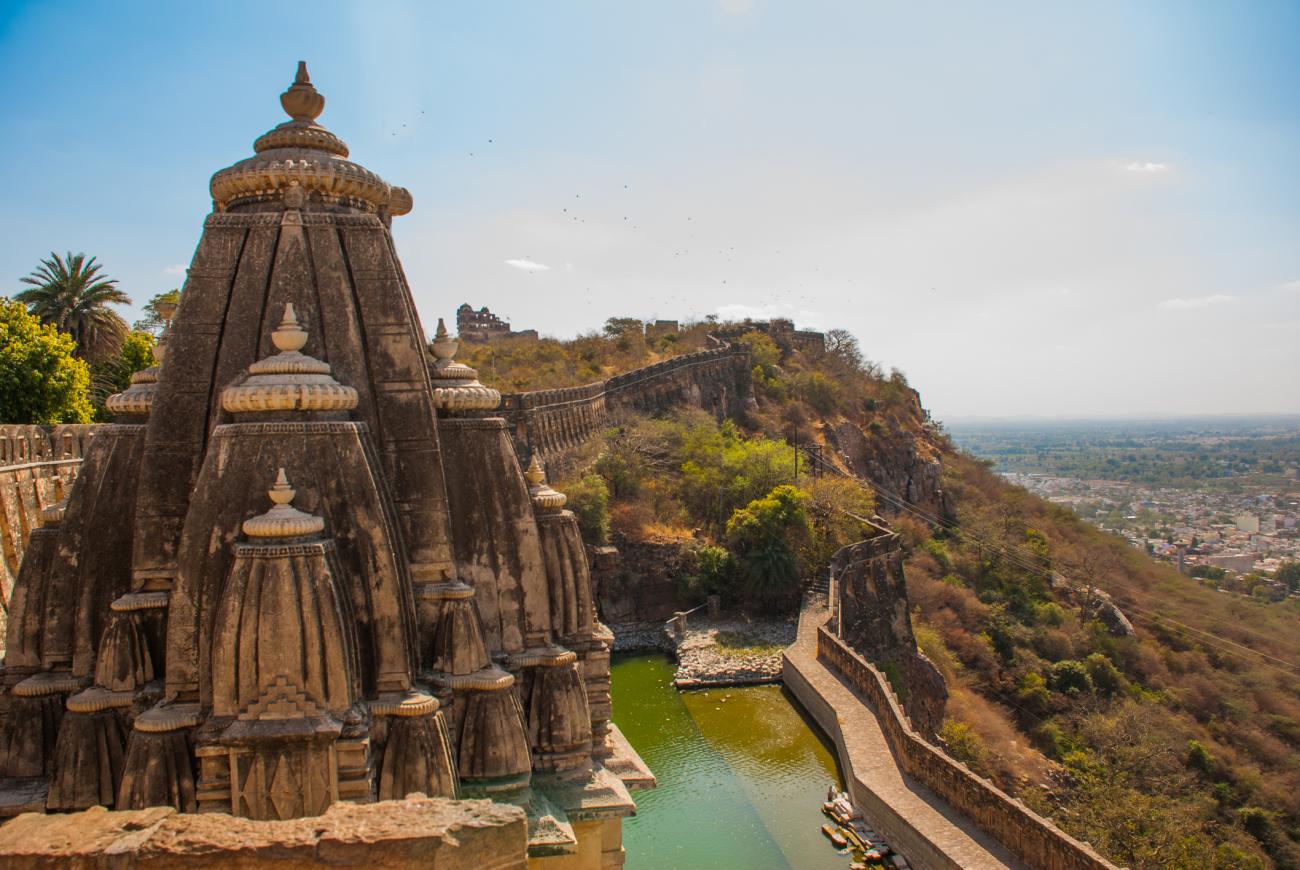
Memories of Rajput honour, romance and valor haunts the ruins of the citadel of Chittaur where one can see glimpses of the imperial glory of the bygone era in its daunting forts, stylish palaces and fabulous 'chhatris'. The land has given birth to the likes of Maharana Pratap who continued to defy Mughals till his death, despite all the hardships that he had to bear. Even his enemies thus respected him.
Today, Chittorgarh attracts tremendous interest from tourists all over the world, who come here to behold the wonders of some of the finest examples of Rajput architecture and the influence of Mughal style on them.
Delhi
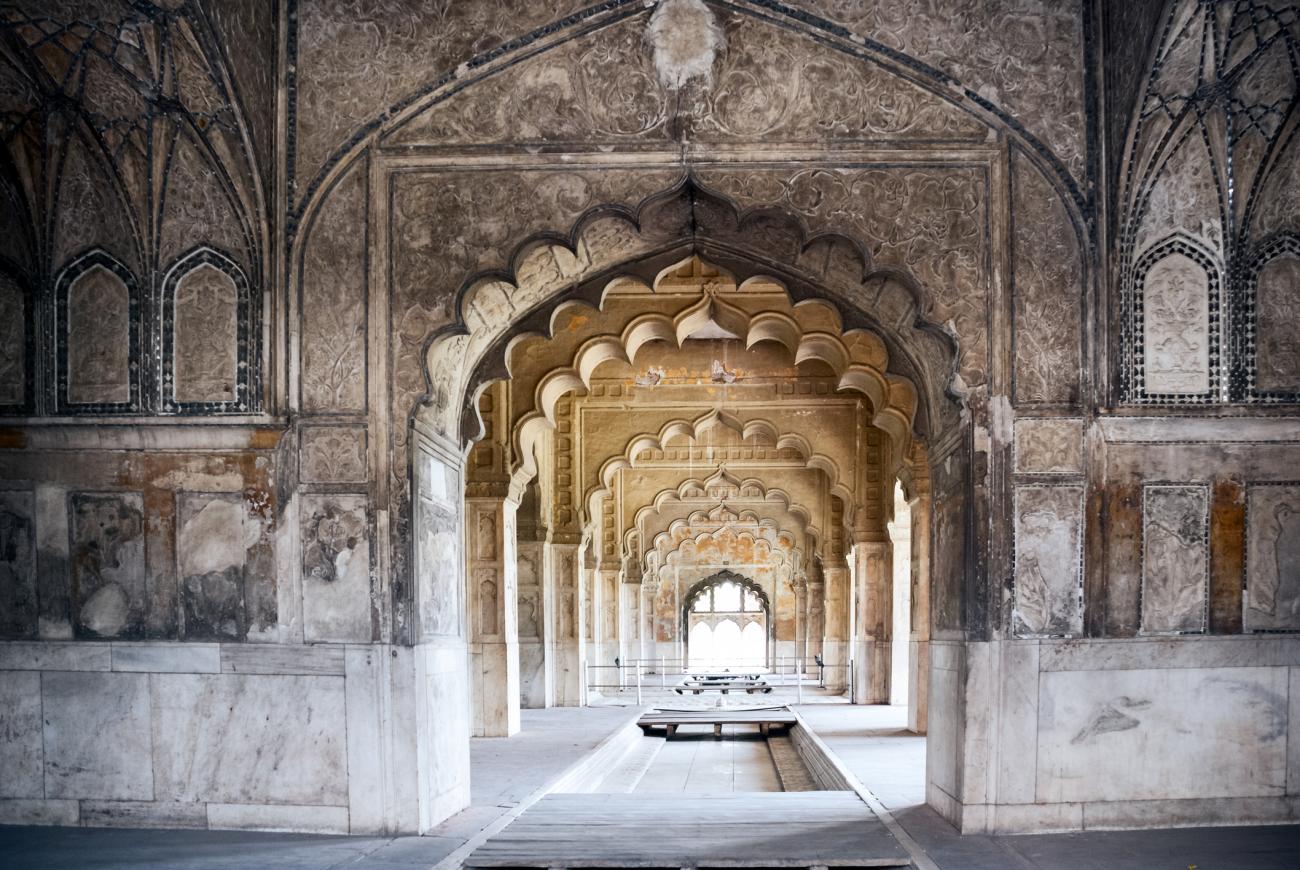
Capital of India, of the British Raj and the Moghul empire, Delhi,is a fascinating place to explore, bursting with centuries of colourful history, of old imperial splendour and modern mayhem. From the chaotic, narrow alleyways of the old town to the relative tranquillity of the new, at almost every corner there is a fort, a mosque, an imperial palace to excite and amaze the visitor.
To wander unhindered down from India Gate to Rashtrapati Bhawan will have even the most seasoned traveller gasping in awe. But just as impressive, and arguably a lot more fun, is to take a walk through the old town; off into the narrow, sunless alleyways that make up Shahjehanabad. Here, among the jewellery, fabric and wedding bazaars you will find a world unchanged for centuries.
Deogarh
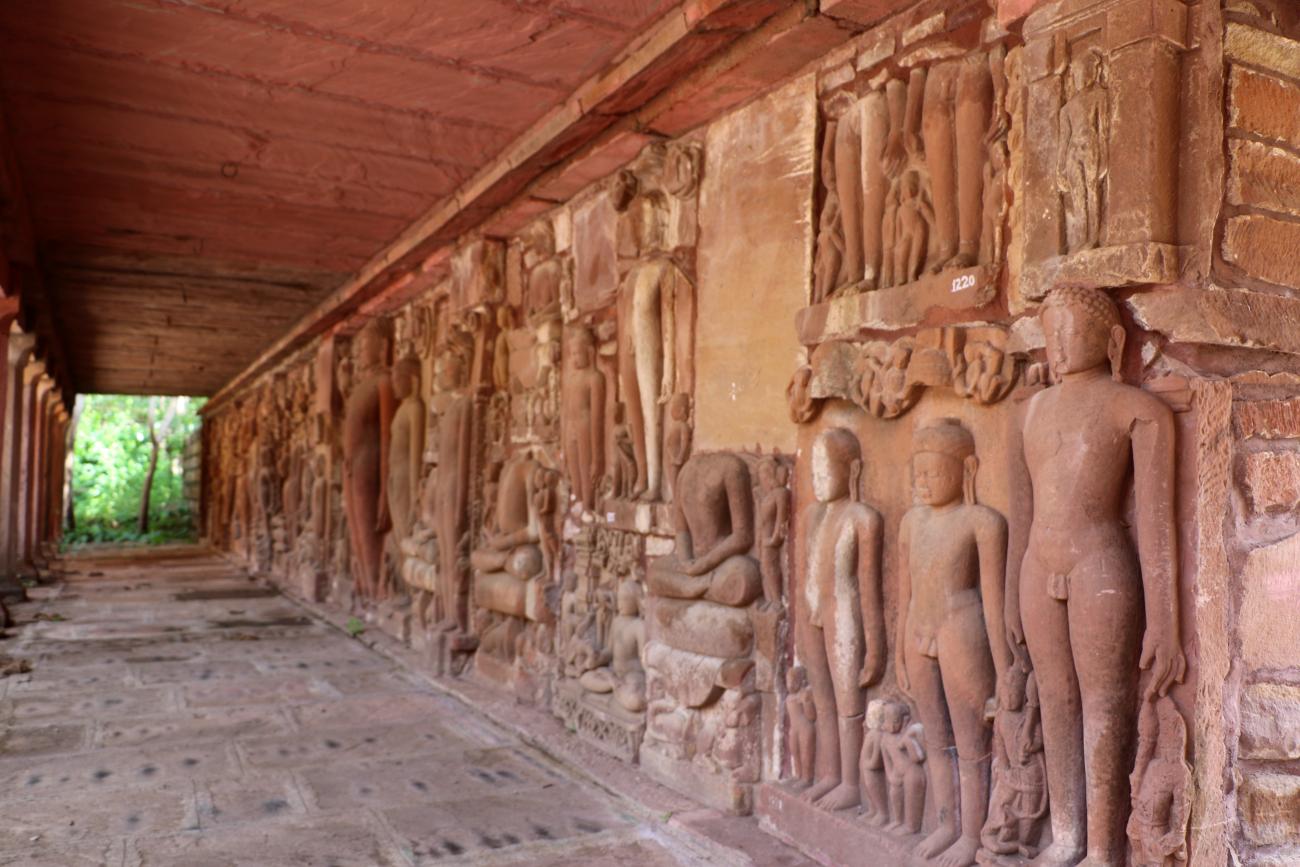
This is a more secret place, off the beaten track, that we think shows you the other side of the colourful state of Rajasthan. An unspoilt rural village with out of the way temples and lakes, remote trekking and wildlife safaris and sensational family-run heritage hotels. Watch rare birds as they fly in to sleep by the nearby lake. Or simply stroll through this village, well away from the madding crowds, simply watching India’s unspoilt traditional rural life taking place.
Gondal
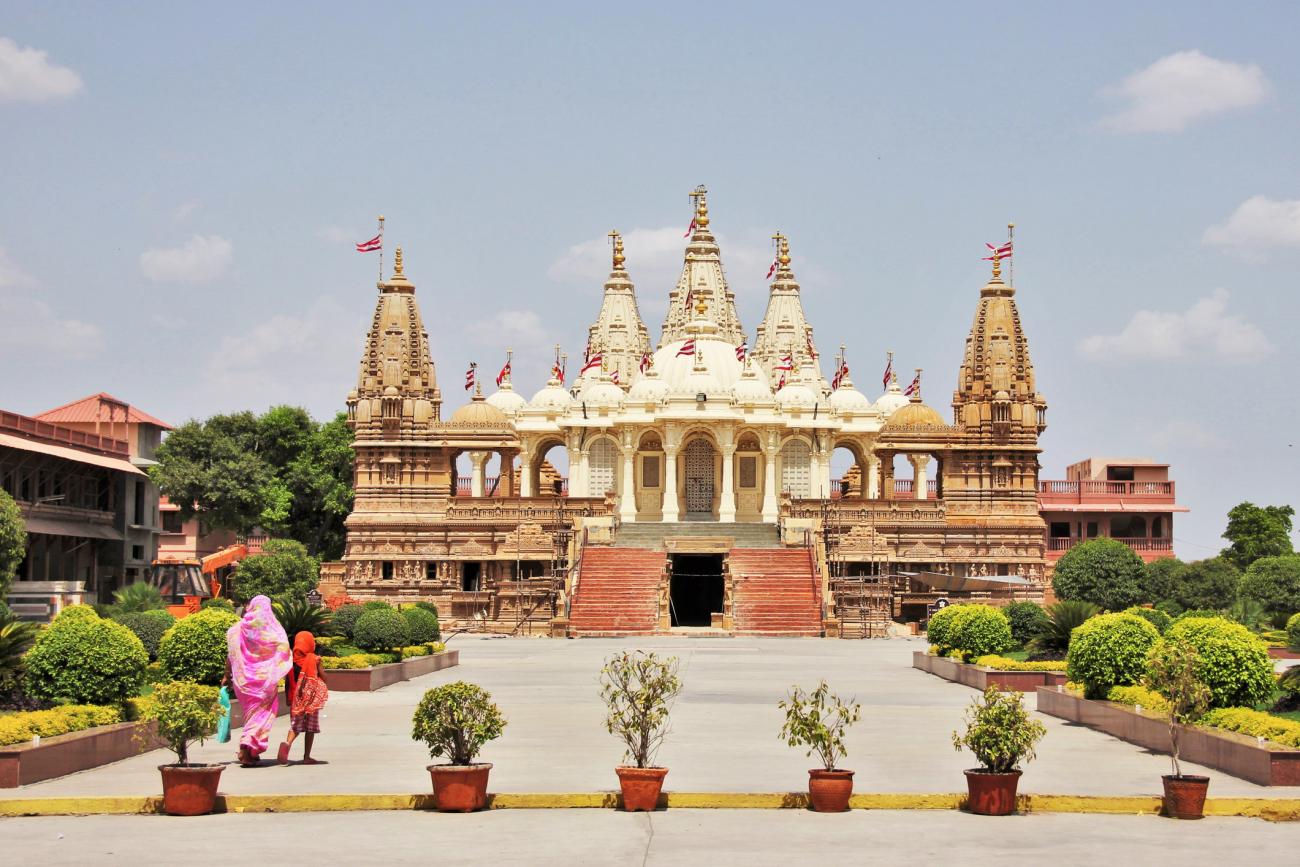
A fortified town, lying on the banks of the River Gondali, Gondal was the former capital of the Jadeja kings. A testimony to the vision of Sir Bhagwatsinhiji Maharaj, the town was meticulously planned to the aesthetic tastes of its former regent. Renowned as a champion of the common man, Sir Bhagwatsinhiji planned parks and bazaars, libraries and hospitals and he was instrumental in advocating compulsory education for women, as well as social reforms.
Known as the 'Paris of Saurastra' during the days of the Raj, the town's major attractions include the 17th century Naulakha Palace, the historic Riverside Palace and the Royal Garages, home to an extensive collection of vintage and classic cars that date back to the turn of the 20th century.
Bijolia
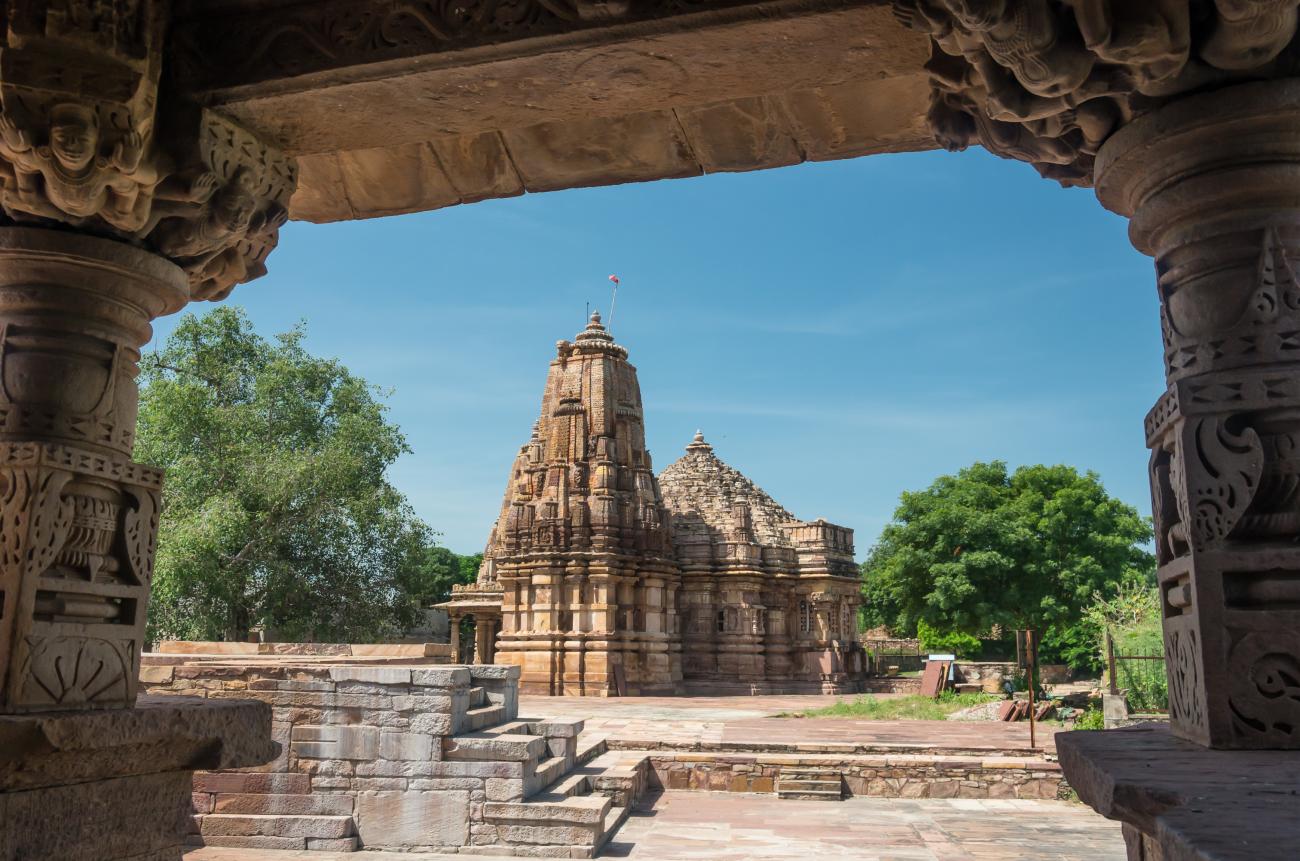
An ancient fort, the city of Bijolia is situated on the Bundi to Chittorgarh road. A high paved courtyard on the side of the fort has a large temple of Lord Shiva in its centre with a fine image of Lord Ganesha standing as a guardian at the entrance. A carved archway leads to the temple. In ancient times it was known as Vindhyavali.
During the Chauhan period, it became a famous centre for art and architecture. Several beautiful Shiva temples were constructed by the Chauhan rulers on this site, most of which have either disappeared or are in ruins today. On the eastern side of the town near the city wall, there are three beautiful temples. Prominent amongst them is Hajaresvara Mahadeva temple.
Sorsan Wildlife Sanctuary
Sorsan grassland is about 45km to the east of Kota city in southern Rajasthan. The grassland is surrounded by the Chambal and the Parvan rivers, is a treeless area of jharber growing in patches on shallow soil. During monsoons, the grass and vegetative cover becomes an ideal habitat for insects and consequently becomes a paradise for resident and migratory birds.
The main attraction for bird watchers at Sorsan is the Godawan - the great Indian bustard. This tall, heavy bird can be seen walking with confidence and grace in the grassland. Besides the birds found in the grassland, one can also see water birds in the canal, in the River Parvan and in the lakes of Sorsan and Manpur village.
Marwar Junction
'It all began at Marwar Junction, three long summers and a thousand years ago.' So begins Rudyard Kipling's, The Man That Would Be King; a classic tale that saw two British rogues depart on a journey to the lands of Kafiristan in the hope of becoming kings. We travel a little more sedately, on the local train for a wonderful two-hour journey up from the plains, over the Khamli Ghats and onto the Aravalli plateau.
Climbing through khaki hills of acacia, neem and jacaranda, the trip is one of the most picturesque train journeys you're ever likely to take. Waiting for us at Deogarh station will be the Nawab of Deogarh with jeeps to take us to his hilltop fort - now a stunning heritage hotel.
Fatehpur Sikri
Built by the Mughal Emperor Akbar in 1573, this royal city is thought to be one of the greatest accomplishments of Mughal architecture. The site is said to have been chosen by Akbar because it was here that the birth of his heir had been prophesied.
Sadly the city was abandoned only fifteen years after its completion due to the lack of an adequate water supply. The intricately carved palaces, formal courtyards, reflecting pools, harems, tombs and mosques, all built out of a brilliant red sandstone, are now a UNESCO world heritage site.
Kumbhalgarh
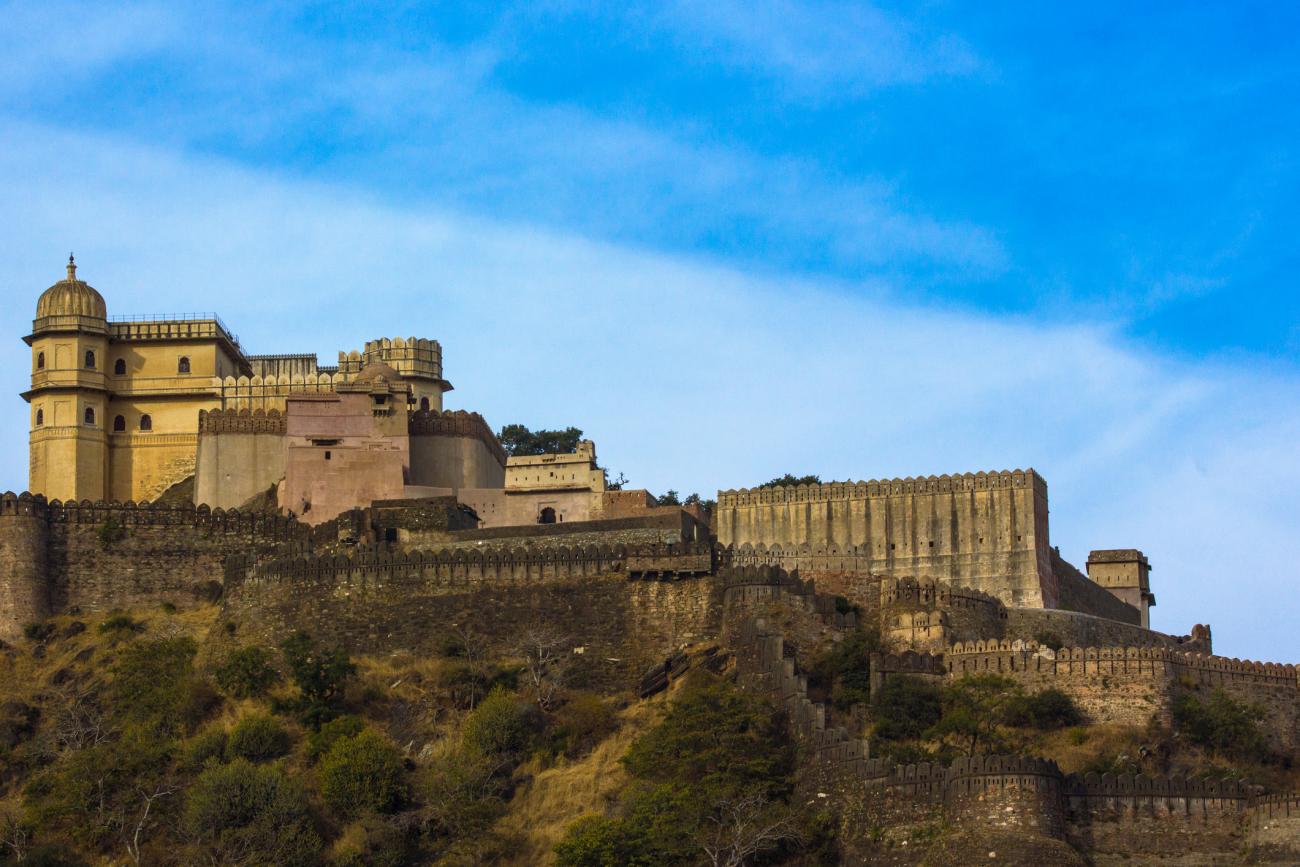
This Mewar fort in Rajasthan was built in the 15th century and occupied until the 19th century. Surrounded by 13 mountain peaks, this fort was one of the most impenetrable fortresses in the country.
Kumblegarh is now a museum and twice a day sacred lamps are lit before vermilion-daubed images of Hanuman, Chamunda, and Ekling in an age-old tradition. On top of the fort you will find the beautiful Badal Mahal Palace. This creates a brilliant contrast to the rocklike appearance of the fortress.
Jaipur
.jpeg)
The Pink City, founded by Maharaja Jai Singh II, is the capital of Rajasthan and is a major attraction for the first-time visitor. It's surrounded on all sides by rugged hills, crowned with forts and enclosed by medieval walls. Houses with latticed windows line the streets with their rose pink colour, lending enchantment to the scene, which is almost magical at sunset.
The whole city was painted pink by Maharaja Man Singh II when the Prince of Wales, later Edward VII, visited Jaipur in 1876. Today, every home within the city is obliged by law to maintain its facade.
The city offers an endless variety of crafts. Jewellers still fashion beautiful enamel-on-gold pendants and Jaipur's lacquer bangles are famous all over the world. Jaipur is a city to be explored.
Jodhpur

Rajasthan's second city was founded in 1459 by Rao Jodhaji, chief of the Rathore Rajputs who ruled over Marwar. Jodhpur was to become one of Rajputana's wealthiest cities, due to its position on the Delhi-Gujarat trade route and the fact that it was protected by one of the most impenetrable forts anywhere.
Today it is a sprawling, sometimes polluted city but within the old walls - where every building is painted the same light blue hue, earning Jodhpur the nickname "Blue City" - you'll find a teeming maze of narrow streets and bazaars, where life appears much as it has for centuries. Towering above is Mehrangarh Fort, its impenetrable walls rising like sheer cliffs from the rocky outcrop on which it is built -a stunning backdrop to this diverse city.
Jhalawar
Home to our good friend Ex-Maharaja Chandrajeet Shakawat, Jhalawar is a city in south-eastern Rajasthan, the capital of the former princely state of Jhalawar. The city was founded by Jhala Zalim Singh in 1791 as a military garrison town and was at the time surrounded by dense forests and wildlife. Also known as Jhaldapattan, the town was the centre of trade for local opium, oil-seeds and cotton.
An extensive ruin near the town is the site of the ancient city of Chandrawati, said to have been destroyed in the reign of Aurangzeb. The finest feature of its remains is the sun temple of Sitaleswar Mahadeva. All Wild Frontiers clients stay with Chandrjeet at his family’s old hunting lodge.
Jaisalmer
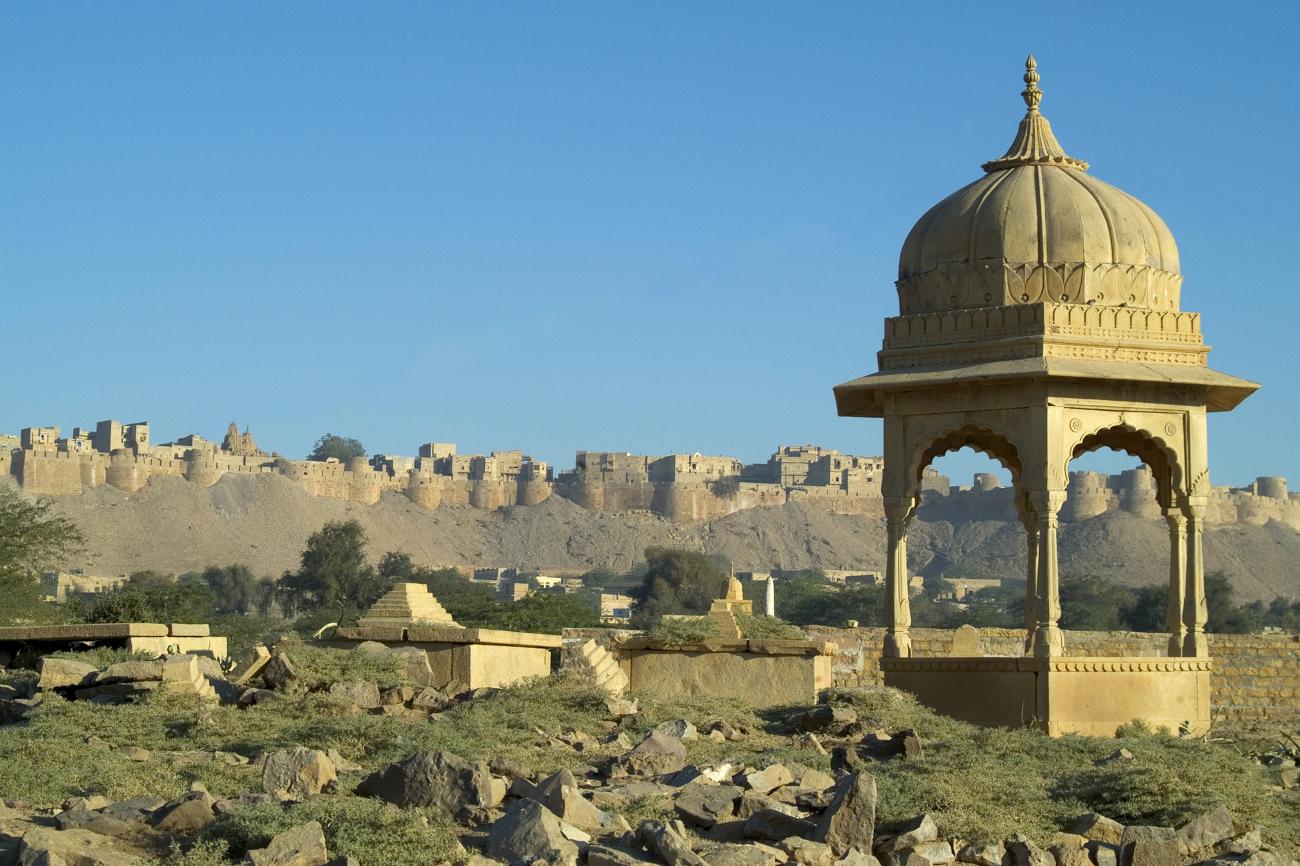
This fortified medieval town on the edge of the Great Thar Desert is quite simply one of the treasures of India. Dubbed 'the Golden City' because of the colour imparted on its sandstone ramparts by the setting sun, to see it rising from the desert like a giant sandcastle is a magical experience, that is only enhanced as you lose yourself in the Jaisalmer fort's labyrinthine alleyways and bazaars.
It is a place that exists only in the imagination; a city straight out of the Arabian Nights. As a major staging post on the caravan routes of the Old Silk Road, like Mandawar, Jaisalmer became rich on trade with many of the merchants building fabulous mansions and halvelis, all exquisitely carved from wood and the mellow yellow sandstone.
Kishangarh
Kishangarh is found in Ajmer about 100 km west of Jaipur. It is the birthplace of the Kishangarh style of painting, which is known for the beautiful depiction of a courtesan known as Bani Thani. In recent years, Kishangarh has come to be known as the marble city of India. It is purported to be the only place in the world with a temple of nine planets.
Karauli
An old princely-state, Karauli has an old fort and several palaces with some attractive frescoes and jaalis. Although off the beaten track, it is well worth a visit, offering travellers a remote and ancient town, with a blend of warm royal hospitality and serene rural environment.
Karauli was officially founded in 1348 AD by the Yaduvanshi Rajput, Raja Arjun Pal. Although legend has it that the princely state of Karauli was established by Raja Bijal pal Jadon as far back as 995 AD. The ruling family of Karauli are considered the descendants of Lord Krishna, The Yadav Rajput. It's also home of Shri Madan Mohanji, the deity of lord Krishna, worshipped by millions of followers from all over India.
Mandawa
This sleepy town, a largely forgotten backwater on the tourist trail, was once an important trading post on the southern branch of the Old Silk Road. Previously catering primarily to the camel caravans carrying silver and gold from the markets of Delhi across the desert to Bikaner, Jaisalmer and onwards to Kabul.
In the mid 18th century merchants became so rich on trade they built elegant havelis – or townhouses – many of which they painted with wonderful murals that still survive today. Staying at the Maharaja’s medieval fort – complete with battlements, turrets, towers and canons – a wonderful glimpse into the past can be gained.
Mount Abu
The history of Mount Abu is as diverse as the city itself. Once a part of the Chauhan kingdom of Rajasthan and served as a summer resort for the Rajput kings of the region. After that, it was leased to the British government for use as the headquarters of the resident to Rajputana.
During British rule in India, it was the favourite summer destination of the British, who came here to escape the dusty, dry heat of the plains. Legend has it that all the 330 million gods and goddesses of the Hindu pantheon used to visit this holy mountain. It is also the place where the great saint Vashishth lived and performed a yagna (sacrificial worship) to create four Agnikula (clans of fire) to protect the earth from demons.
Nagaur
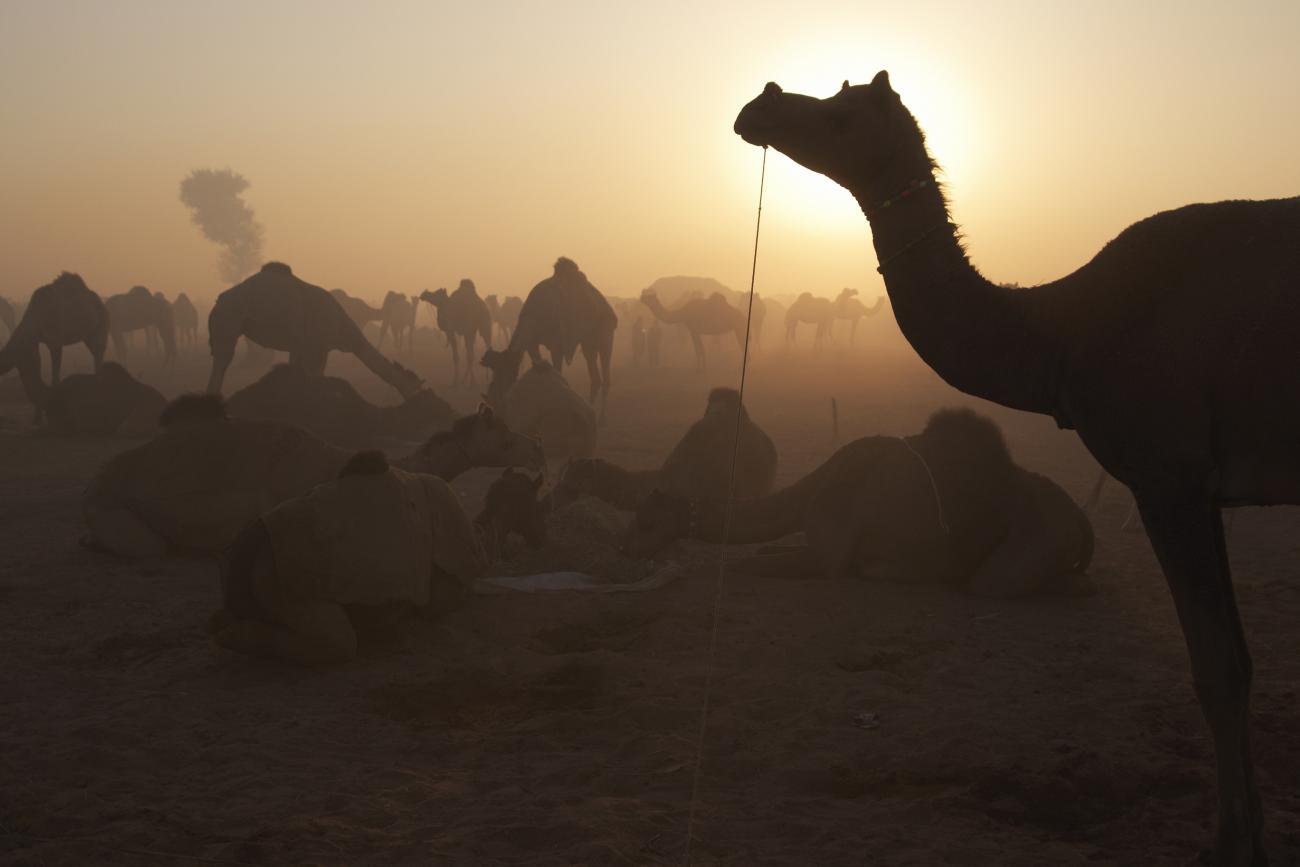
Sandwiched between two historic cities namely Jodhpur and Bikaner in Rajasthan, Nagaur also has its mention in the folklores for being birthplace legendary characters like Meera and Abul Fazal. Sites like Charbhuja, Parasawanath Temple, Dargah of Sufi Saint Tarkin and others are situated in the town making hotels in Nagaur a hit amongst history lovers and connoisseurs of architecture. Various true explorers make their way to this less discovered land and they all choose a comfortable base from a gamut of Nagaur hotels.
Palitana

The Jain temples of Palitana are considered to be amongst the most sacred of their kind anywhere. Spread across the Shatrunjaya Hills of western Gujarat, there are no fewer than 863 marble temples across the lush hillsides; a temple city built as an abode for the gods. Dating to the 11th and 12th centuries, the temples represent the largest cluster of Jain temples on the planet, a vast pilgrimage site crowned by the main temple of the 1st Teerthankara, Lord Adinath.
These magnificent temples provide an awe-inspiring spectacle for devotees and visitors alike, their jewelled statues and carved idols follow a stone stairway to the summit, where views across the Shatrunjaya River and out to the Gulf of Cambay present a breathtaking spectacle against the backdrop of spires and marble.
Pushkar
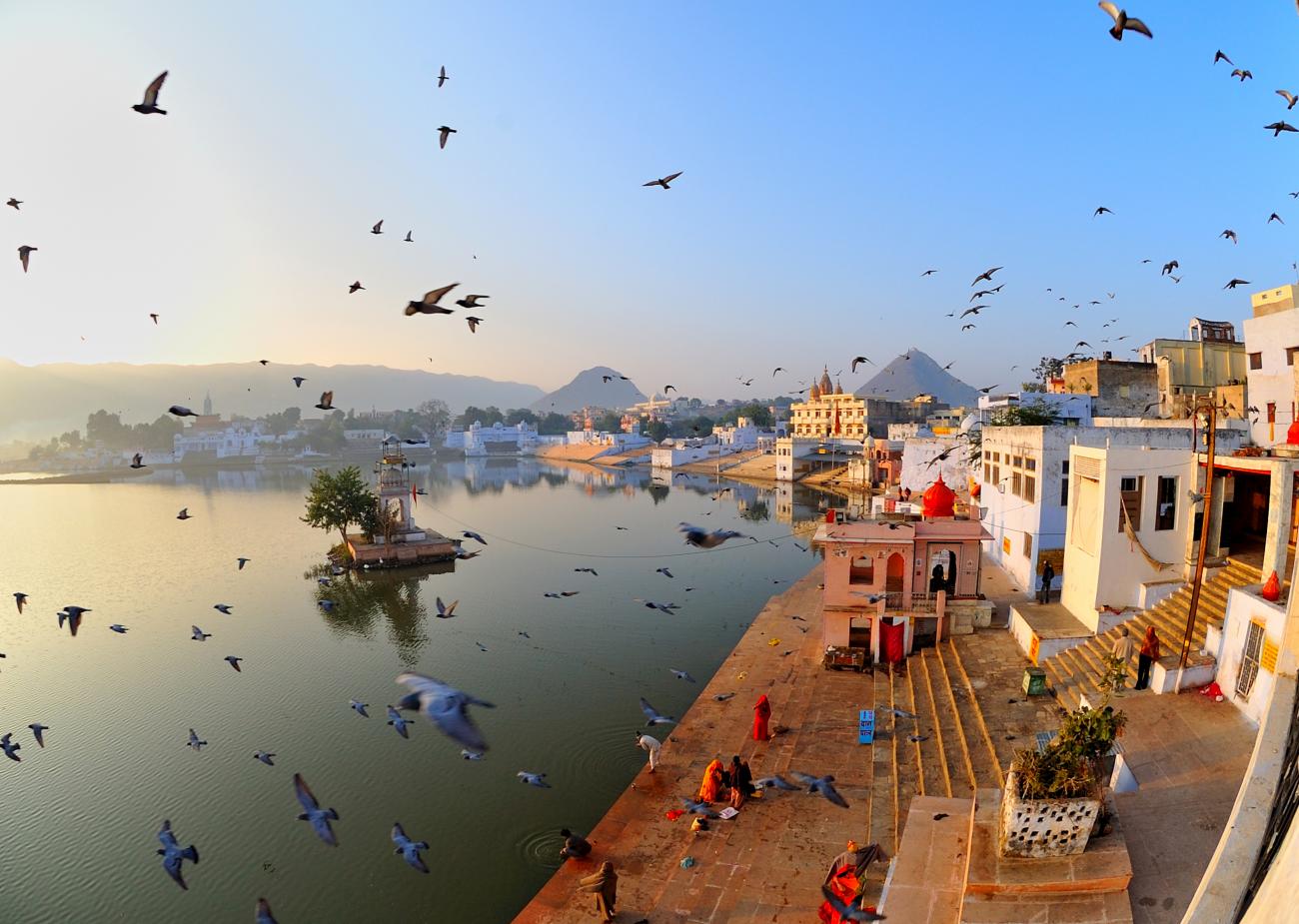
Situated on the shores of Lake Pushkar, the quiet town of Pushkar is one of the oldest in India. Mythology suggests that the Lord Brahma was associated with its creation and pilgrims flood to the city every year to bath in the sacred waters. It is also one of the only places in the world where there is a temple dedicated to Brahma.
The other older temples in the city were mostly destroyed by Muslim conquests in the area although a few do still remain and are worth a visit. It is also the location for the well known Pushkar Festival which is one of the most famous festivals in the area. During festival time the city comes alive with bazaars, auctions, music and sports.
Ramathra
Any traveller visiting the Golden Triangle region of Rajasthan, should make a stop at the village of Ramathra. Nestled between Ranthambore and Keoladeo National Parks, the countryside here provides an insight into rural Rajasthan. The main income of the land is agriculture and fields stretch in every direction, dotted by lakes and hamlets. Towering above the village is the impressive, 350 year old Ramathra Fort, home to the founders descendants for over ten generations and now a wonderful Heritage Hotel.
Ranthambore
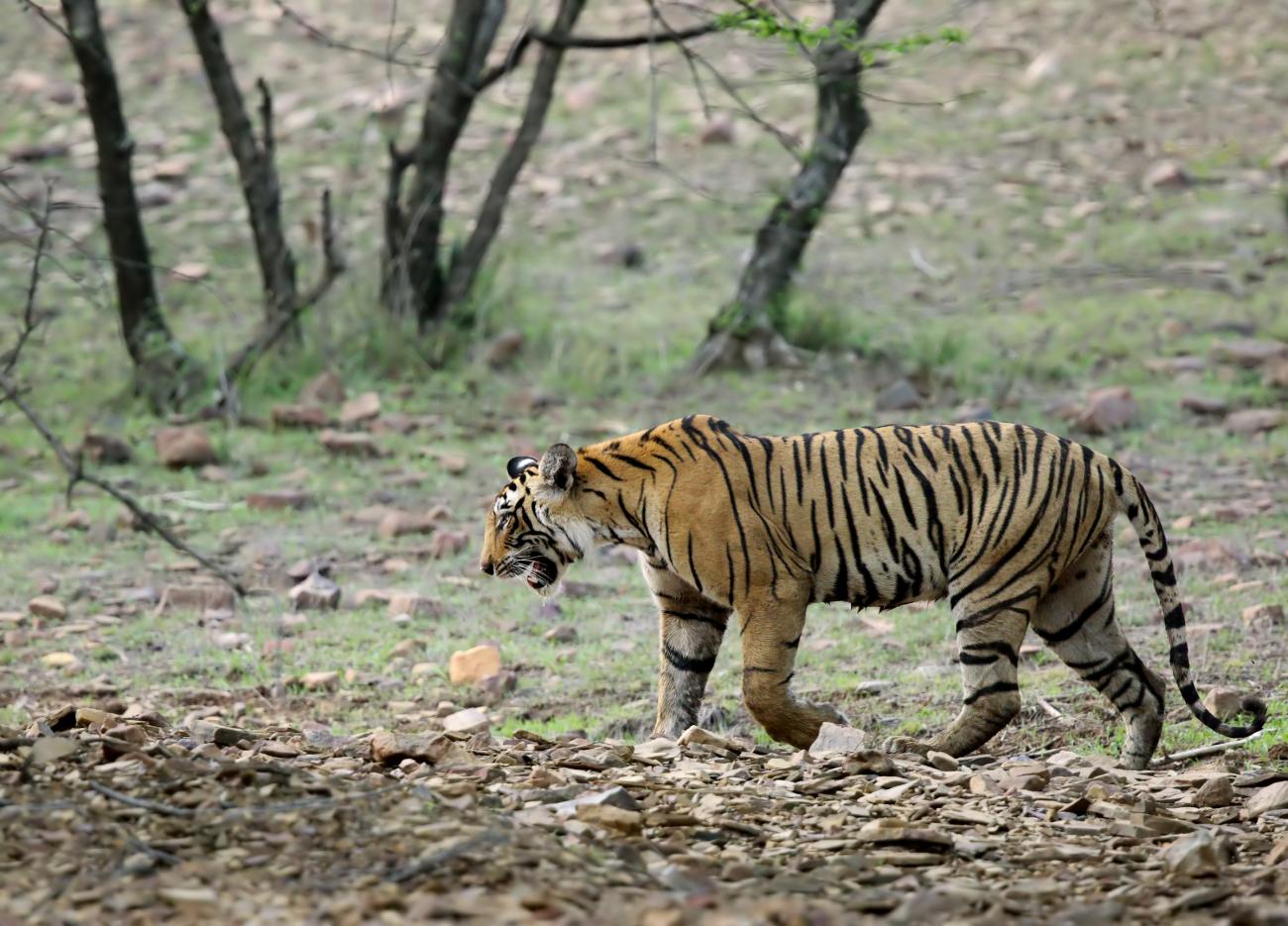
Ranthambore National Park is one of the biggest and most renowned national parks in Northern India. The park is located in the Sawai Madhopur district of south-eastern Rajasthan, which is about 130 km from Jaipur.
Originally one of the famous hunting grounds of the Maharajas of Jaipur, today Ranthambore National Park is a major wildlife tourist attraction. The park is spread over 1,334 sq km and it's primarily famous for the endangered Bengal Tiger and is one of the best locations in India to see these majestic predators in their natural habitat. Additionally there is a wealth of other flora and fauna to be seen such as deer, sloth bears, jackals, leopards and a plethora of birdlife.
Rann of Kutch
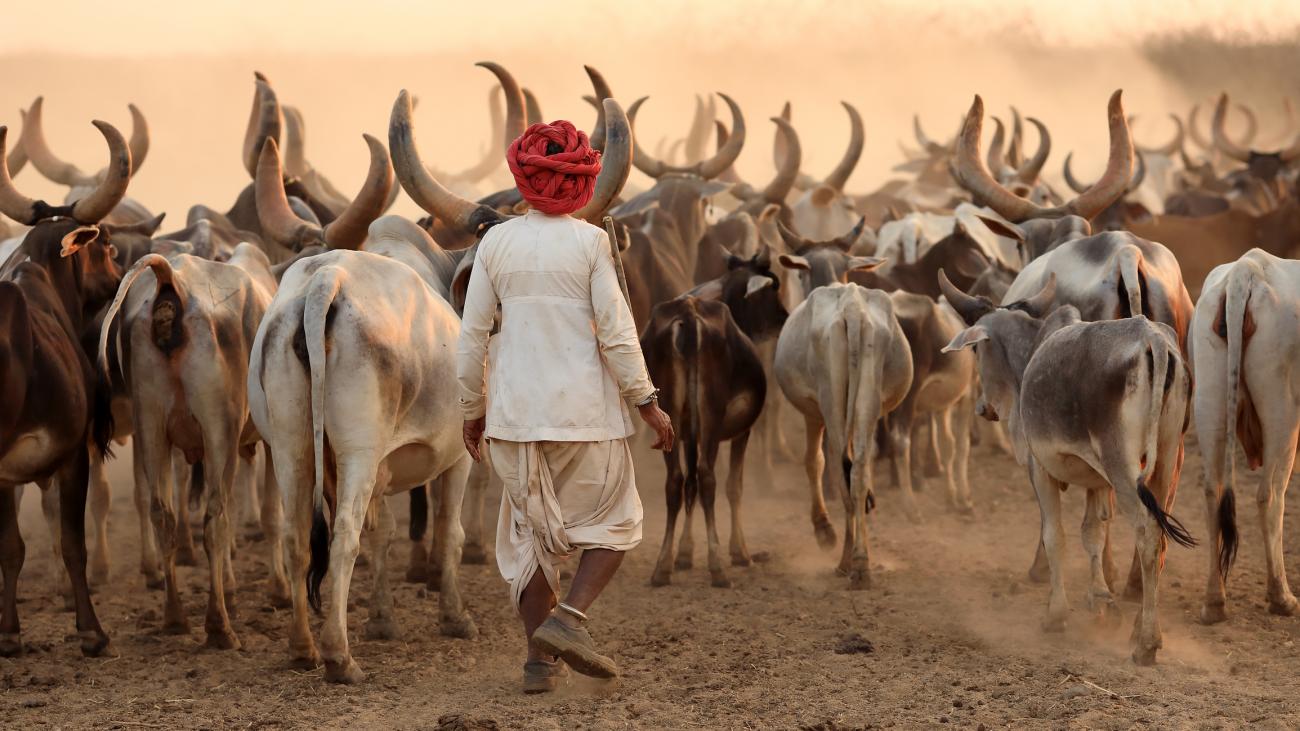
Separating Gujurat from the Sind region of Pakistan, the Rann of Kutch is a unique area of marshland that covers some 30,000 square kilometres of scrub, grasslands and salt pans lying amongst the vast landscapes of the Thar Desert.
Divided into Little and Greater Rann, the area is home to a fascinating mix of natural and cultural attractions, including India's last herds of Asiatic wild ass, endangered Indian wolf and no fewer than 18 different tribal communities, whose languages and customs provide visitors with an extraordinary blend of ethnic traditions. During the wet season the area reverts to a huge inland sea and becomes a haven for migratory birds, indeed, this area is the only place in India and Pakistan where flamingos come to breed.
Rohet
Less than an hour’s scenic drive from Jodhpur, the rural village of Rohet. The area is very traditional and centred around farming. It offers a peaceful place to relax or an interesting place to explore. When staying at Rohat you can visit the Bishnoi tribe, the world’s first conservationists.
Udaipur
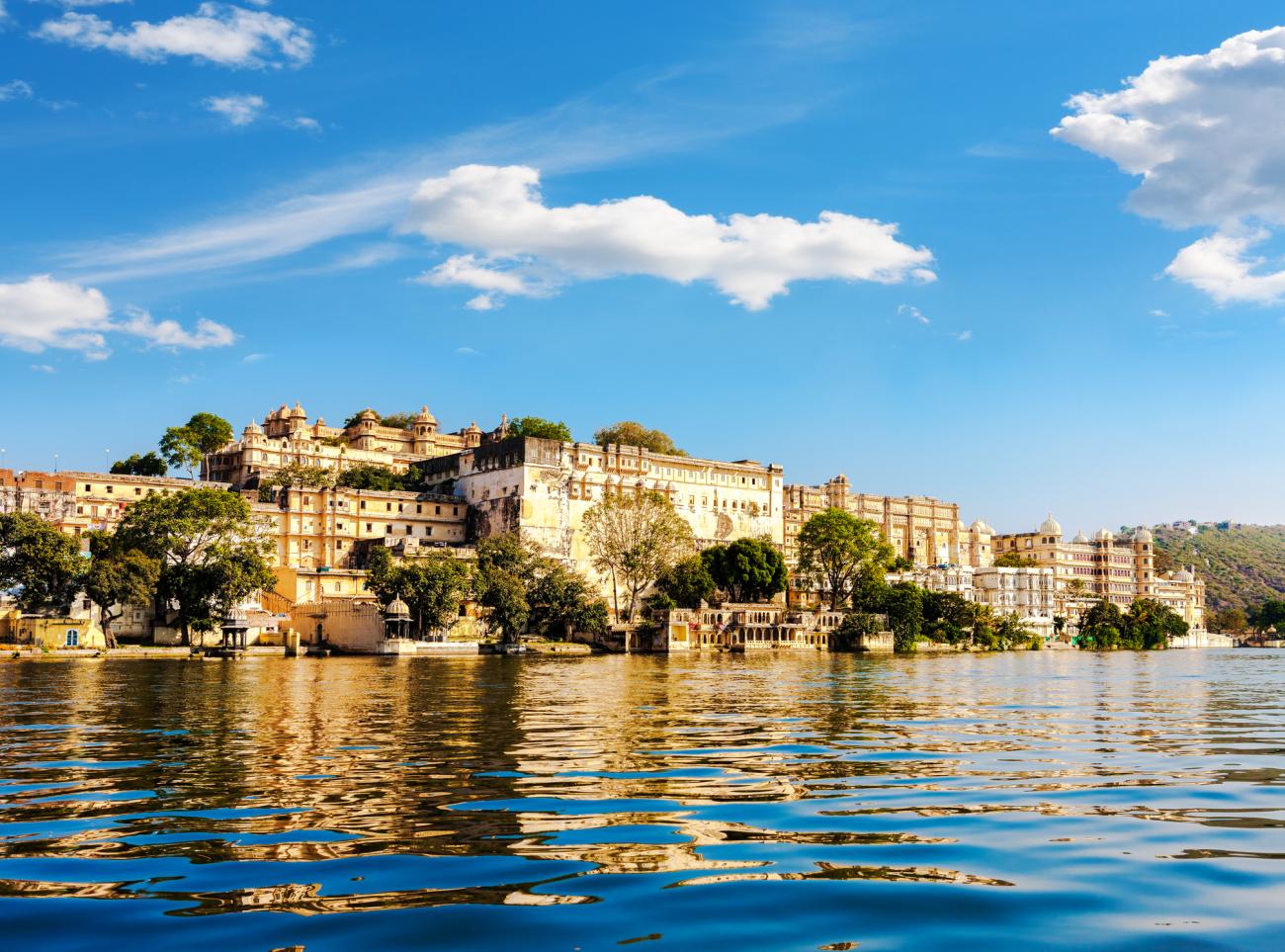
If you were to ask the staff of Wild Frontiers - many of whom have spent a considerable amount of time in India - which was their favourite town on the Subcontinent, you would almost certainly receive the answer, Udaipur.
As romantic as any city on earth - with its hill forts, city palaces, tranquil lakes and quiet alleyways - it's no surprise that it has been called the Venice of the East. Founded in 1568 by Maharana Udai Singh, Udaipur rivals any of the world-famous creations of the Moghuls with its Rajput love of the whimsical and its superbly crafted elegance. The Lake Palace is certainly the best example of this unique cultural explosion, but Udaipur is full of palaces, temples and havelis ranging from the modest to the extravagant.
Jawai Bandh
Jawai Bandh is a village close to the Jawai Dam, along the Jawai River. Interestingly, the village's name has no correlation with the dam and it only has a similar name by chance. The dam is the biggest in the whole of western Rajastjan and is very impressive. Jawai Bandh is easily accessible through the New Delhi-Ahmedabad train.
